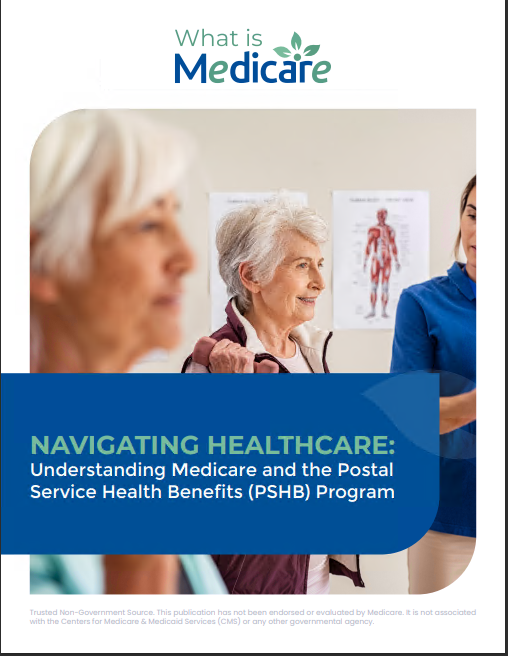Key Takeaways:
- Eligibility for Medicare hinges on age, disability status, and other key criteria that might surprise you.
- Understanding Medicare’s enrollment periods and coverage options can help you avoid costly mistakes.
Who Can Get Medicare? Let’s Make It Simple
If you’re navigating the complex maze of healthcare, you’ve probably heard about Medicare. But how do you know if you qualify for it? Don’t worry—I’m here to break down the essential details about who’s eligible for Medicare and how to approach enrolling without any headaches.
Medicare: Not Just for Seniors
Most people associate Medicare with reaching age 65, and that’s a big part of it. But eligibility is broader than many realize. Here’s the rundown:
Age-Based Eligibility: The Basics
Medicare primarily caters to individuals aged 65 and older. If you’re hitting that milestone birthday, you’re in luck. You can enroll starting three months before your 65th birthday and up to three months after it, making the window a total of seven months.
Disability Opens the Door Early
What if you’re not 65 but dealing with long-term health challenges? You might still qualify. If you’ve been on Social Security Disability Insurance (SSDI) for 24 months, Medicare becomes available to you, no matter your age.
End-Stage Renal Disease (ESRD) and ALS
Two serious conditions come with special Medicare access. If you’re diagnosed with End-Stage Renal Disease and need regular dialysis or a kidney transplant, or if you have Amyotrophic Lateral Sclerosis (ALS), you’re automatically eligible for Medicare.
Parts of Medicare You Need to Know
Before diving into what coverage you qualify for, it’s worth understanding the different parts of Medicare:
Part A: Hospital Insurance
This covers inpatient hospital stays, skilled nursing facilities, hospice care, and limited home health services. For most people, Part A comes at no cost if you or your spouse paid Medicare taxes for at least 10 years (or 40 quarters). If not, you might have to pay a premium.
Part B: Medical Insurance
Part B covers doctor visits, outpatient care, and some preventive services. This part isn’t free; most people pay a monthly premium. In 2024, the standard premium is $174.70 with an annual deductible of $240.
Part C: Medicare Advantage
Medicare Advantage plans bundle Part A and Part B, often including extras like dental or vision coverage. These plans are offered by private companies, but since we’re focusing on general eligibility here, we’ll steer clear of specific details.
Part D: Prescription Drug Coverage
Part D is all about helping you with prescription drug costs. It comes with its own set of premiums and deductibles, depending on the plan you choose.
How to Determine Your Eligibility
The Core Checklist
To be eligible for Medicare, you must meet one of these main criteria:
- Be age 65 or older.
- Receive SSDI benefits for at least 24 months.
- Have been diagnosed with ESRD or ALS.
Residency Matters
One key factor that sometimes gets overlooked is residency. You need to be a U.S. citizen or a permanent legal resident living in the U.S. for at least five consecutive years to qualify for Medicare.
Breaking Down Enrollment Periods
Understanding when to sign up is just as crucial as knowing if you’re eligible. Missing enrollment windows can mean late penalties or delayed coverage.
Initial Enrollment Period (IEP)
For those turning 65, your Initial Enrollment Period is a seven-month window. This period includes the three months before, the month of, and three months after your 65th birthday. Sign up during this time to avoid delays and potential late enrollment penalties.
General Enrollment Period (GEP)
Missed your initial window? The General Enrollment Period runs from January 1 to March 31 each year, but be aware—coverage won’t kick in until July 1, and late enrollment penalties may apply.
Special Enrollment Periods (SEPs)
Life happens. You might be working past 65 or covered by your spouse’s insurance. If you lose employer coverage or experience another qualifying event, you can use a Special Enrollment Period to join Medicare without penalties.
Avoiding Pitfalls with Late Enrollment Penalties
Nobody likes penalties, and in the case of Medicare, they can add up quickly. Here’s how to dodge them:
- Part B Penalty: If you don’t enroll in Part B when you’re first eligible, you could pay a late penalty for as long as you have Medicare. This penalty is usually 10% for each full 12-month period you delay.
- Part D Penalty: Going without credible prescription drug coverage can lead to a late enrollment penalty if you decide to enroll later.
Are You Still Working at 65? Here’s What You Need to Know
If you’re still employed when you turn 65 and have health coverage through your job (or your spouse’s job), you might not need to sign up for Part B immediately. However, check with your benefits administrator to confirm whether your employer plan is considered “creditable” by Medicare standards. If it isn’t, you’ll want to enroll to avoid future penalties.
Coverage for Younger Adults: Don’t Count Yourself Out
It’s easy to assume Medicare is only for seniors, but that’s far from true. Millions of younger Americans qualify due to disabilities, making this an essential part of the program’s reach.
SSDI and Medicare
The rule of thumb here is that you must receive SSDI benefits for 24 months before becoming Medicare-eligible. The 25th month is when your coverage begins automatically, so there’s no need to initiate a separate application for Medicare.
ESRD and ALS Benefits
If you have ESRD, your Medicare can start as soon as the first month of dialysis if certain conditions are met. For ALS, Medicare coverage starts the same month your SSDI benefits kick in—no waiting period needed.
What If You Don’t Qualify?
If you find that you don’t meet Medicare’s eligibility requirements, don’t lose hope. Options like Medicaid or healthcare exchanges can fill the gap. While not ideal for everyone, these alternatives can provide necessary coverage until Medicare eligibility comes into play.
Planning Ahead: Enroll with Confidence
Navigating Medicare can be confusing, but preparing ahead of time is half the battle. As you approach age 65, start reviewing your eligibility, learning about your enrollment periods, and gathering the necessary documentation. If you’re younger but living with a qualifying condition, keep track of when your 24-month SSDI mark hits or plan around your treatment timeline for ESRD.
Wrapping Up Your Path to Medicare Eligibility
Understanding whether you qualify for Medicare can feel overwhelming, but breaking down the rules and timelines makes it manageable. Start by identifying which category you fall into—age-based, disability, or a specific condition. Next, make sure you know your enrollment periods and avoid pitfalls like late penalties. With the right approach, you can confidently navigate your path to Medicare and get the coverage you need.










